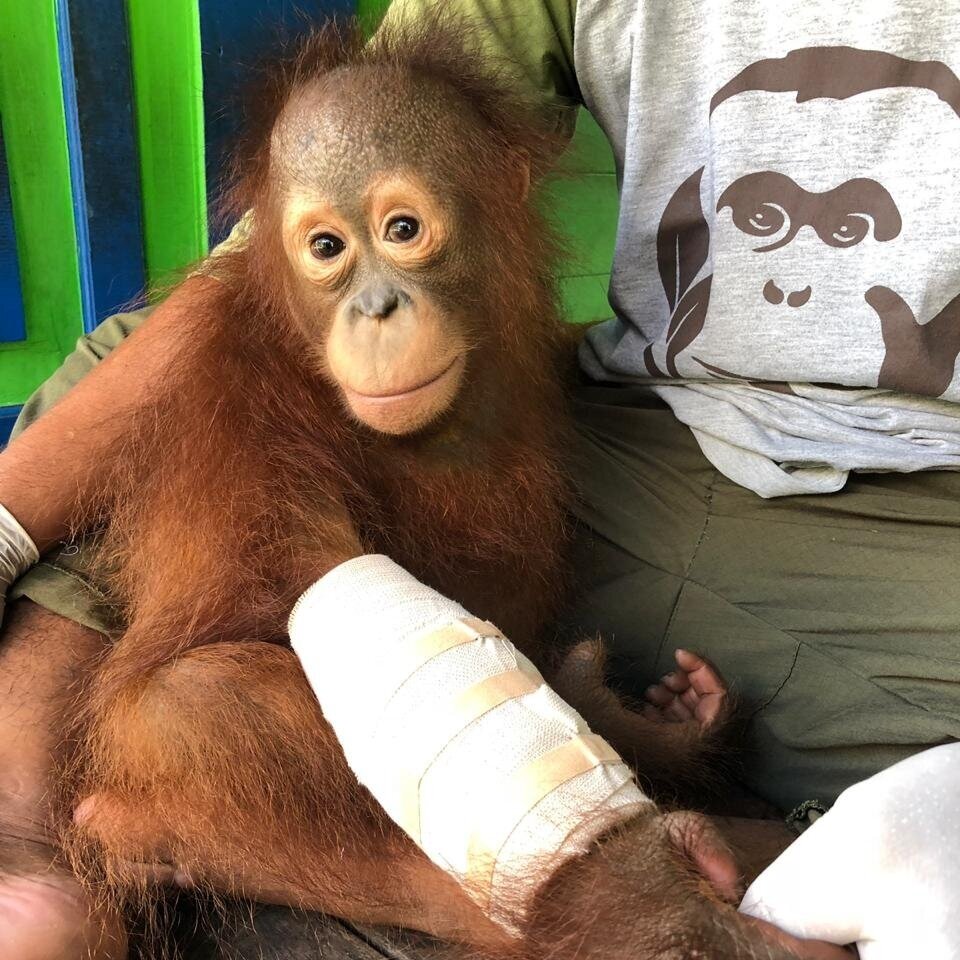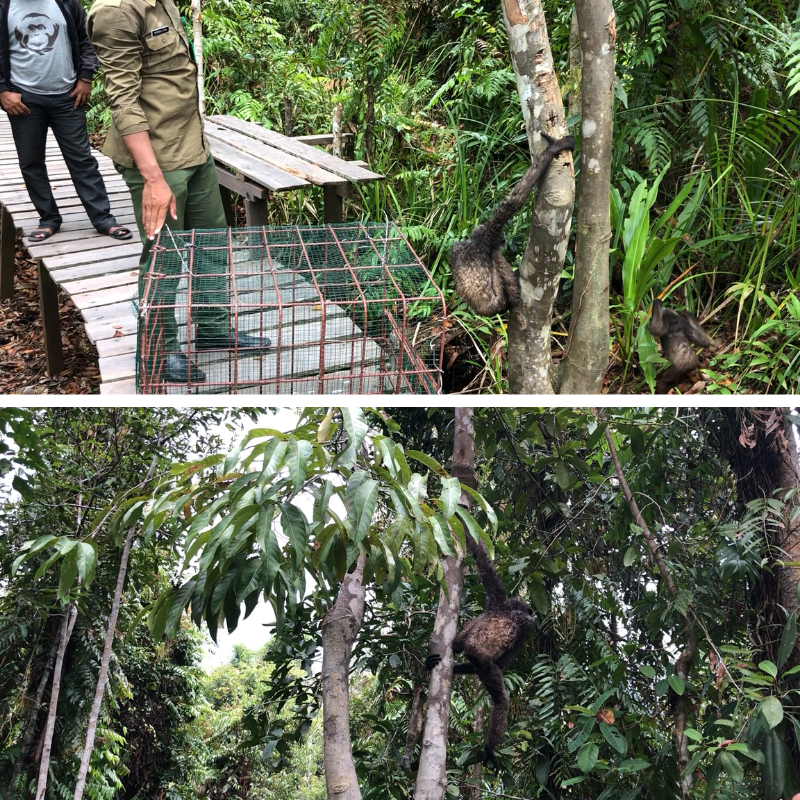Adib is the youngest male orangutan among the ten orphans currently in Orangutan Foundation’s soft-release programme. Despite his young age, Adib has experienced and endured a great deal in his early life.
Once entered into the soft-release programme, Adib takes his first ever climb into the trees.
Adib was raised as a pet until he was rescued in 2017 at around one and a half years old. Orangutans of his age in the wild would be entirely reliant on their mother in order to learn necessary forest skills and receive proper nourishment. With the likelihood that his mother was killed, it was therefore vital that Adib should receive appropriate care in the Foundation’s soft-release programme and develop in a natural environment.
Adib shares his current surroundings with four other orphans at Camp JL within the protected forest of the Lamandau Wildlife Reserve, Indonesian Borneo. Each morning these young primates climb out of their overnight enclosures and enthusiastically swing between branches, forage for food, and practice nest-making skills around camp. With no mother to keep a watchful eye on them, it’s the role of our expert team of assistants to ensure that these orphans stay safe.
When climbing high in the canopy is involved, there is always a danger to these adventurous young orangutans and accidents can still happen, as Adib discovered himself in December 2018. As he practised his climbing by stretching between branches in the trees, Adib accidentally fell to the ground and appeared to be in some discomfort. Following emergency X-rays, our vet Dr Dimas discovered that Adib had a small fracture in his right arm and required a temporary cast in order to hold it in place.
Fortunately at such a young age Adib’s bones are able to heal more rapidly, and ten days after his accident, he was able to grip fruit and hold onto camp staff as they held him.






Despite what must have been a painful time for Adib, it hasn’t stopped him from being adventurous and active in the forest today. Now at 4 years of age, he’s beginning to master the art of climbing through the trees in search for food, but still has some time to go before he becomes an expert nest-builder.
Our team are encouraged by the progress Adib has made since his time in the Foundation’s orangutan soft-release programme and look forward to the day that he will be fully prepared for an independent future in the wild.




























































































